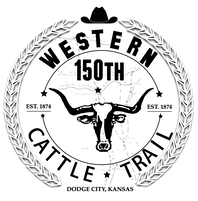|
Original Story by Lynne Hewes Edited and Extended by Michael King
Contrary to Hollywood's glamorous fiction, singing cowboys were a genuine part of the earlier cattle drives, adding a touch of authenticity to cowboy culture. Long hours on horseback gave cowboys idle time to sing. Some carried harmonicas or even fiddles, but the human voice was the easiest and best instrument. Most started with old folk songs they had learned as kids, then changed the lyrics to fit their lives on the trail. This process of adaptation was not just about changing the words, but also about infusing the songs with their own experiences, emotions, and the unique challenges they faced as cowboys. Cattle drives were over by 1907 when historian John Lomax, a key figure in the preservation of American folk music, set out to study the cowboy's music. Lomax, known for his extensive field recordings and his efforts to document and preserve traditional American music, collected songs and ballads from any and everyone and put out advertisements in local papers. The response was nearly overwhelming. He compiled these songs three years later and published them as 'Songs of the Cowboy and other Frontier Ballads', a seminal work that significantly preserved and popularized cowboy music. E.C. Abbot, also known as "Teddy Blue," discussed cowboy songs in his autobiography, We Pointed Them North: Recollections of a Cowpuncher. Abbott wrote about his own singing on the trail. His book explained the popularity of singing this way: "Another thing about cowpunchers, they didn't have any radio or other forms of entertainment, and they got a big kick out of little things" (220). There was a practical reason for the song as well. Abbot wrote, "One reason I believe there were so many songs about cowboys," he wrote, "was the custom we had of singing to cattle on night herd. The singing was supposed to soothe them, and it did....I know that if you wasn't singing, any little sound in the night—it might be just a horse shaking himself-could make them leave the country, but if you were singing, they wouldn't notice it" Abbot talked about particular songs he said were his favorites, many of which had come from the Ozark Mountains. "I learned' The Little Black Bull' first," he wrote. "That's the oldest song on the range.... 'Bury Me Not on the Lone Prairie' was another great song for a while, but it ended up just like a lot of songs on the radio today; they sung it to death...." (222-4). Sometimes, boredom with traditional lyrics led to new songs. Abbot wrote, 'After a while, you would run out of songs and start singing anything that came into your head. And that was how [new songs got started]'. This process of creating new songs out of boredom and improvisation was a testament to the creativity and resourcefulness of cowboys. It also contributed to the rich and diverse repertoire of cowboy songs, which ranged from traditional folk songs to original compositions. Sources
Abbot., E.C. and Helena Huntington Smith. We Pointed Them North: Recollections of a Cowpuncher. University of Oklahoma Press, 1939. Cecil, Randle, and Shelby Conine. “Singing Cowboys.” Country Music Project. https://sites.dwrl.utexas.edu/countrym usic/the-history/singing-cowboys/
0 Comments
Leave a Reply. |
Author"THE MISSION OF THE WESTERN CATTLE TRAIL ASSOCIATION IS TO PROTECT AND PRESERVE THE WESTERN CATTLE TRAIL AND TO ACCURATELY PROMOTE AWARENESS OF IT'S HISTORICAL LEGACY." Archives
July 2024
Categories |


 RSS Feed
RSS Feed

